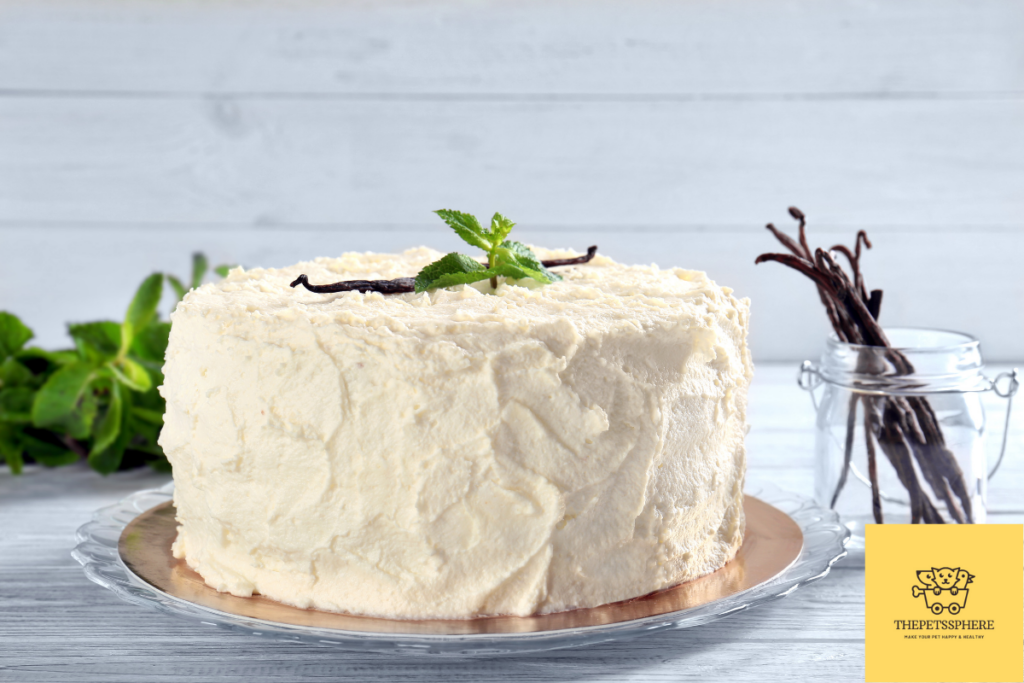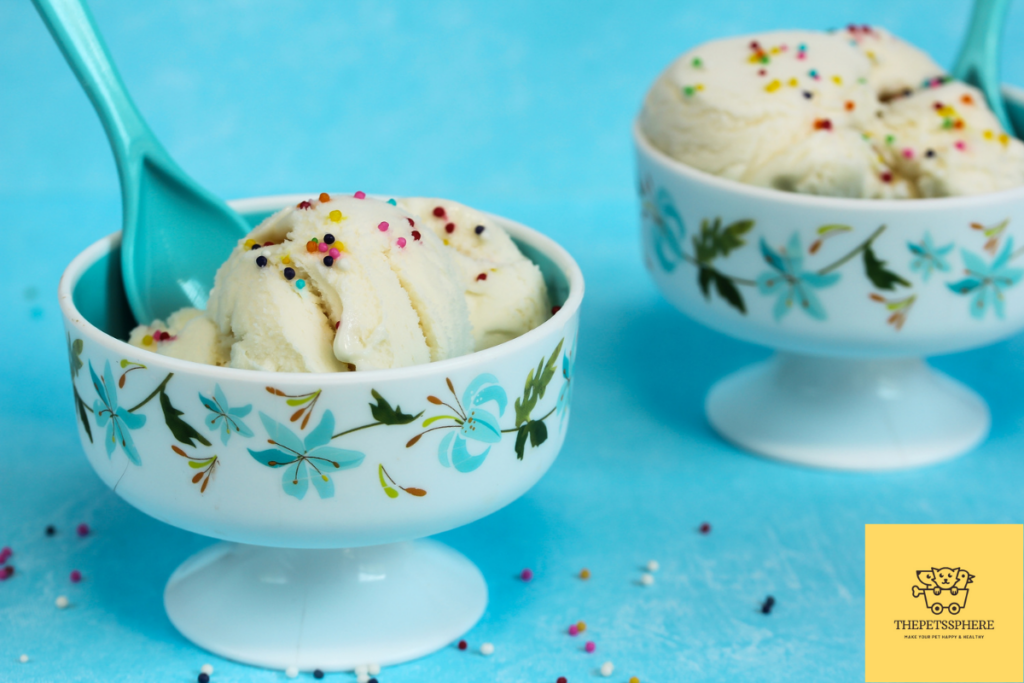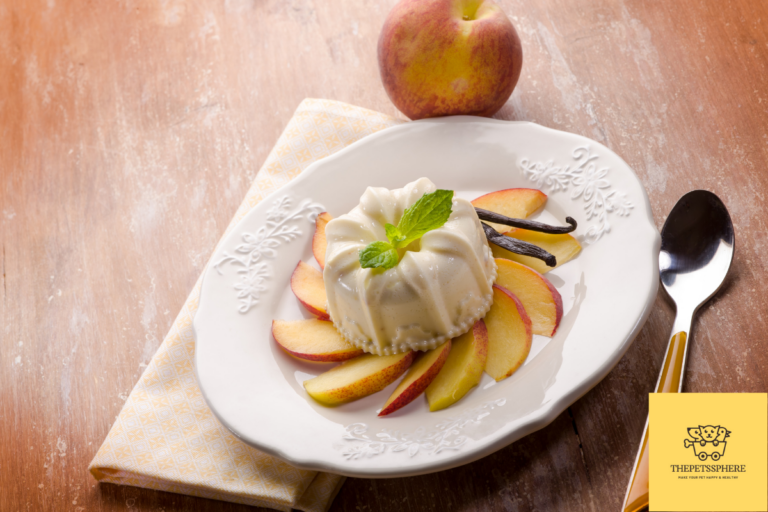Many people know that vanilla is a flavor of food, but not everyone knows that one can also use it as a cooking ingredient. For example, there are many recipes out there for making ice cream with vanilla pudding. In this blog post, we want to talk about whether or not cats can eat vanilla pudding.
Cats can’t eat vanilla pudding because it can cause some serious health issues for them. It is loaded with sugar, milk, butter which can cause Gastrointestinal Upset if consumed regularly.
Also, Ethyl Poisoning can also happen to cats if they consume vanilla extracts without any moderation. However, you can make delicious vanilla pudding without much salt, sugar. We have shared 3 recipes at the end of this post. Make sure to check that out!
Let’s talk about vanilla pudding in more detail so that you can make the best decision for your furry friend!
Ingredients in Vanilla Pudding
Vanilla pudding is a very popular dessert that many people love to eat, but few know what goes into it. The main ingredient is milk, and it also contains eggs, sugar, cornstarch, and vanilla extract or flavoring.
This recipe may be modified with different types of sugar such as brown sugar or granulated white sugar- depending on the desired taste preference.
There are many variations of the recipe including adding cornstarch or gelatin to thicken up the mixture as well as adding flavorings such as cocoa powder, lemon zest or even cinnamon.
Reasons Why Cats Shouldn’t Eat Vanilla Pudding
It’s a scientific fact that vanilla pudding is the most delicious dessert on earth. But, it turns out that this tasty treat isn’t good for cats! Read more below to find out why cats should never eat vanilla pudding.
1) Cats can’t taste sweetness like humans, so they don’t enjoy eating desserts like humans do. The main reason behind this is that they don’t produce enough amylase enzymes to break down sugar molecules in their stomachs.
If they eat too much sweet food it could lead to diabetes and high amounts of sugar can cause dental problems for them such as tooth decay or gum disease
2) When excess sugar is ingested by cats it creates an imbalance with insulin that could result in Diabetic Ketoacidosis.
3) Vanilla extract contains alcohol which can be toxic to pets if consumed in large amounts over time. The toxicity of alcohol in cats is a serious health concern because it can cause kidney and liver damage, as well as respiratory depression. In addition, it dehydrates them which could lead to a fatal condition called Hepatic Lipidosis (fatty liver).
4) Sugar and high fructose corn syrup are harmful to cats because they cause diabetes and obesity respectively.
5) The eggs used in some recipes may contain salmonella or E. coli which could make your cat sick too!
6) Some people add milk to their vanilla pudding which can cause lactose intolerance in cats.
7) One of the main ingredients in vanilla pudding is cornstarch. Cornstarch can be bad for cats because it can cause bloating and the formation of gas pockets in their stomachs. Cats will experience discomfort from these symptoms which may lead to vomiting or diarrhea.
That means they can’t digest the milk so it can lead to stomach upset, diarrhea, and vomiting for them!
If your cat has a food allergy then there’s even more reason not to feed them this delicious dessert because it can worsen their condition.
It’s best for cats to steer clear of vanilla pudding because it can lead to serious health issues!

Can Cats Eat Vanilla Cake?
Cats can eat and enjoy vanilla cake, especially if it’s made with natural ingredients. However, you have to offer it with some moderation.
The following are three simple ways to feed your cat some delicious homemade vanilla cake for special occasions or just because you want to spoil them:
1) You can put a small amount of frosting on top of their regular food so they lick it off while eating their meal.
2) If you have an ice cube tray, fill one of the compartments with frosting and freeze it overnight before popping out a few cubes (you should use at least 2 cubes).
3) If your cat can’t wait for the cake to be served, you can make them a homemade vanilla pudding.
Please note: It’s important to remember that too much of anything can cause problems and moderation is key! So limit your cat’s access or other treats when giving them some amazing food from time to time.

Can Cats Eat Vanilla Yogurt?
Vanilla yogurt is bad for cats! I know, you’re thinking “What?”, but it turns out that the sugar in vanilla yogurt can lead to diabetes and obesity. There’s also a risk of tooth decay because the acid levels are so high. And if your pet eats too much of it, they may get an upset stomach.
Cats are obligate carnivores, meaning they need protein from meat to thrive.
The lactose in yogurt can lead to gas production, and even worse- a painful bellyache due to the fermentation of milk by gut bacteria. The dairy in yogurt is also difficult for cats to break down because they lack certain enzymes needed for digestion which leads to bloating or constipation when consumed as well as weight gain if eaten consistently over time!
So while this might not be the worst thing for humans to eat (just don’t go overboard!), it’s definitely something you should think twice about before giving to your cat!
Can Cats Eat Vanilla Ice Cream?
Cats cannot absorb significant amounts of lactose, and so for those cats that are not lactose intolerant a spoon or two of vanilla ice cream would be ok. However, most cats are lactose intolerant, so it is best to avoid giving them vanilla ice cream because the high levels of sugar in it will cause their blood sugar to spike just as they do in humans with diabetes.
If your cat has been diagnosed with diabetes along with intolerance for milk products other than cheese (whey) then he can eat a few spoonfuls of low carb brownie batter or something similar without worry. Cats need only small amounts to stay healthy and happy after all! Keep feeding him non-milk foods like raw meat and raw fish and he can keep eating vanilla ice cream when you want to have a taste!
3 Healthy Recipes of Vanilla Pudding for your Cat
Cats are very picky eaters, and sometimes they refuse to eat their food. It’s hard to know why a cat might not want to eat its food, but one reason could be that the texture is wrong. Cats typically like foods with a lot of moisture in them, so you’ll need some type of liquid for this recipe.
If your cat doesn’t usually drink water from a bowl then adding it as an ingredient will help add lots of flavor without compromising on moisture content too much.
Now we will talk about 3 recipes for vanilla pudding that can be made without sugar or honey which are two ingredients cats don’t like.
- The first recipe adds mashed sweet potato to the mix and can easily be prepared in advance for an easy grab-and-go snack that is high in protein!
- The second recipe can use almond milk or any other type of nut/seed milk, and can also be made in advance to create a can of your own that can be stored for later use.
- The third recipe is quite similar to the first one but uses egg instead, and can also have honey substituted with stevia extract if you want to avoid adding any sugar at all!
Final Thoughts
Cats can eat vanilla pudding, but they can’t have it too often because of their sensitive stomachs. They can also drink a little bit of ice cream from time to time if they are not lactose intolerant or diabetic like humans.
They can also be harmed from ingesting vanilla extract or pudding without you knowing about it.
If your cat has eaten any type of food containing vanilla extract and/or pudding in large amounts, contact a veterinarian immediately for treatment options that may reduce symptoms such as lethargy, vomiting, diarrhea, and incoordination.
We hope this article is helpful to you!
If you have any questions, please feel free to ask us in the comment section! We will be happy to assist you.
More articles on what cats can eat
- Can cats eat raw chicken fat
- Do cats eat bread
- Do cats eat popcorn
- Do cats like evaporated milk
- Why don’t cats get sick from eating mice
- Is lobster safe for cats
- Do cats like chicken nuggets
- Could cats eat bologna
- Do cats eat cheerios
- Can cats have pine nuts
- Will cats eat imitation crab
- Should cats drink chocolate milk
- Can cats have zucchini bread
- Does cats eat beef jerky
- Are figs safe for cats
- Could cats eat oranges
- Can cats eat raw cashews
- Will cats eat pancakes
- Do cat eat frogs
- Will cats eat pizza
- Do cats eat parsley
- Are radishes poisonous to cats
- Can cats eat green beans
- Do cats like dog treats

